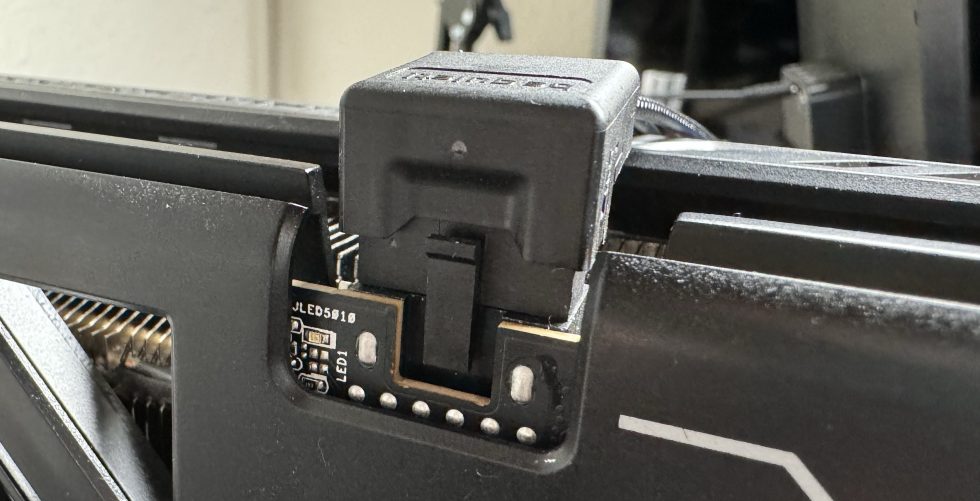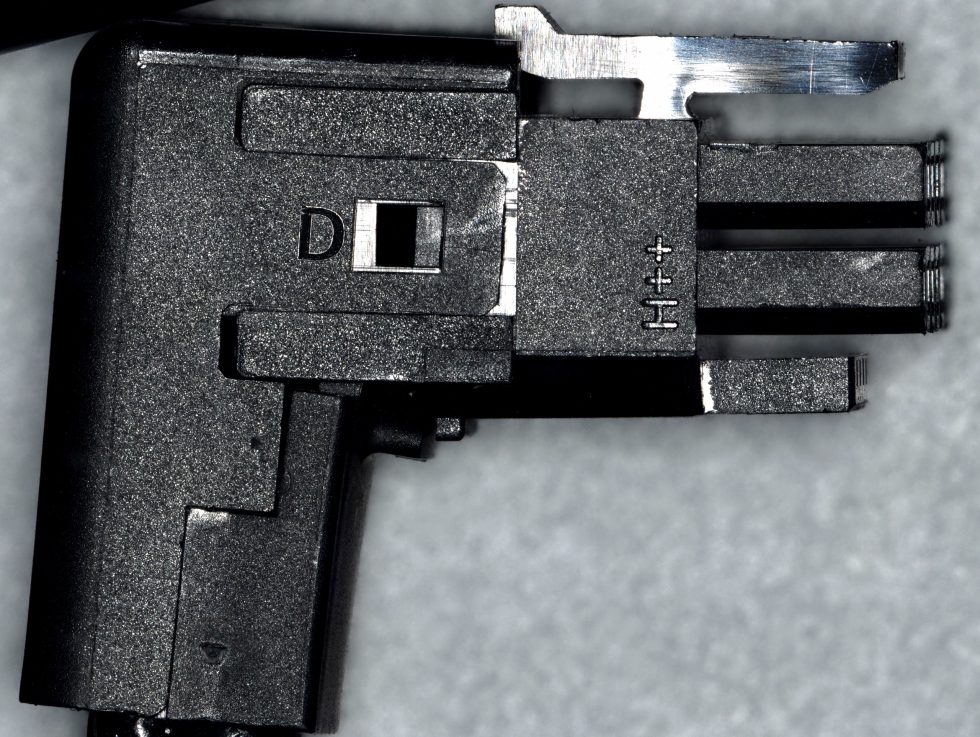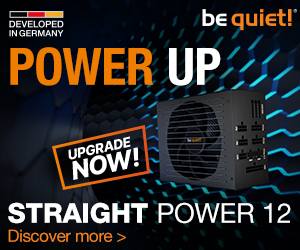If the adapter (doesn’t) bend and the power supply cable collides with the side of the housing, then good advice is often expensive. Especially afterwards. It is precisely for such cases that be quiet! offers a special 90° angle cable designed to avoid this problem. Today’s test will examine what the cable can and cannot do, but I would also ask you to read the following preliminary remarks carefully. I am simply fed up with having to constantly explain myself for things that are often only quoted in excerpts or read superficially.
Important preliminary remark
I must therefore point out once again in advance that such cable solutions, like the CableMod adapter that has since been recalled, were designed solely to alleviate the symptoms of the very tightly dimensioned and rather unfavorably positioned 12V-2×6 or 12VHPWR power supply connections. They can do very little to change the cause. This also applies to the angled cable tested today, which worked without complaint under my conditions and in my environment on an Asus GeForce RTX 4090 Strix (as the most frequently affected card). Analogous to the adapter from CableMod, by the way. I must therefore repeat myself here again, because I cannot guarantee the same performance and security on third-party systems, even though I have tested 10 cables and in some cases even cut them open. The possible causes of failure and the chain of circumstances are simply too varied for this and I will not put on this shoe either.
The fact that CableMod replaced the version 1.0 angle adapters with the 1.1 at the time was only logical after internal tests, because the somewhat loose-fitting, unglued connector led to contact problems with the known consequences with a bit of bad luck and too much pressure from the cables. The fact that version 1.1 was recently withdrawn is more due to the legal framework in some countries and primarily served to take the company out of the line of fire. Ultimately, however, this is not an admission of technical guilt, but rather a capitulation to the technology of this extremely fragile plug connection, which is not 100% predictable. The causal chain of circumstances, right up to the scorching, has not only been discussed by me in great detail, but in the end there are simply too many imponderables for a rather small company. The cable from be quiet! will be no different in the end, so I want today’s test to be understood as an inventory of its use under my conditions. No more, but also no less.
Technical data and reasons for the design
The fact that be quiet! only offers the angled cable in one version has very tangible technical reasons, which I have already explained in my article on the header quality and the comments on Asus’ flip header. When mounted horizontally in a PC, i.e. hanging and not upright (with riser cable), the cable runs downwards, which is usually desired, but upwards for almost all other cards with standardized headers. However, if the card is mounted vertically, e.g. in an extension with riser cable, the cable on the Strix runs towards the side wall, which is quite pointless.

Nevertheless, be quiet! has decided to place the current-carrying cables only on the inside, as possible bending and lever movements are less than with the external cables with the larger bending radius. It is important to know that the manufacturer first bends the pre-crimped cables and then presses them into the connector before the straight section of the cable is cut to length. This has the advantage that the positioning of the cables is much easier and safer. This is laudable and certainly more resilient, but unfortunately rules out another variant.

We can see from the side view that it is almost impossible to realize a real 90° angle housing in such a small space with solid 16AWG cables and a secure sheathing. For this reason, the manufacturer has deliberately built in certain tolerances to ensure that the upper half shell is securely fixed to the connector, even if the angle of the cover (not the cable!) is slightly more than 90°. The solid cables simply do not allow for smaller radii. The use of more flexible, weaker cables with thinner PVC sheathing has thankfully been discarded for safety reasons. The supposedly careless installation is therefore not a mistake, but a safety feature and the user is well advised not to want to make improvements here without reflection. It will not work. Except broken.
So much for what I have to say before today’s test and will continue to say in future when it comes to testing such cables or adapters. Those affected by possible failures are certainly in the per mille range and even then it is not possible to clearly define where the user begins to bear at least partial responsibility and where the connector as such simply provokes errors. I didn’t buy an expensive Asus card for this test for no reason, because I definitely want to include at least this factor.
Technical data
| Manufacturer | be quiet! |
| Version | 12V-2×6 angled cable with 90° connector to 1x 16-pin PCIe 5.0 |
| Length of the cable without connector | 68.7 cm (manufacturer 70 cm) |
| Weight | 158 grammes |
| Cables | 12 wires (6x ground, 6x 12V) 4 sideband signal cables |
| Cables | 16 AWG 115 wires, each with a nominal cross-section of 0.12 mm tinned electrolytic copper |
| Insulation | UL94 (without details) |
| Price | from around 16 euros |
be quiet! 12V-2x6 / 12VHPWR 90° Cable PCI-E (BC073)
 | Zentrallager: 5 Stück lagernd, Lieferung 1-3 WerktageFiliale Wilhelmshaven: 5 Stück lagerndStand: 29.04.24 10:05 | 15,68 €*Stand: 29.04.24 10:06 |
| nullprozentshop.de | siehe Shop | 15,69 €*Stand: 29.04.24 10:03 |
 | Onlineshop: lagernd, Lieferung 2-3 WerktageFiliale Düsseldorf, Filiale Hannover/Laatzen: lagernd (keine Online-Reservierung möglich)Filiale Berlin, Filiale Dortmund, Filiale Hamburg, Filiale München, Filiale Stuttgart: nicht lagerndStand: 29.04.24 10:04 | 15,69 €*Stand: 29.04.24 10:05 |





































50 Antworten
Kommentar
Lade neue Kommentare
Veteran
1
Veteran
Veteran
Veteran
Neuling
Veteran
Urgestein
Urgestein
Veteran
Urgestein
Urgestein
Urgestein
Urgestein
1
Urgestein
Urgestein
Urgestein
1
Alle Kommentare lesen unter igor´sLAB Community →